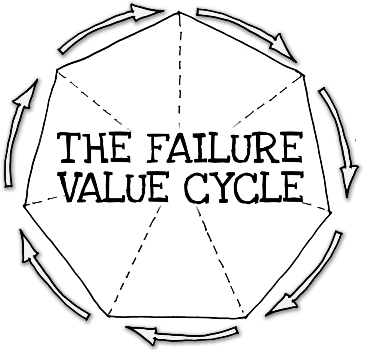 9The Failure Value CycleSeven Stages Where You Can Leverage or Flunk Failure
9The Failure Value CycleSeven Stages Where You Can Leverage or Flunk Failure
I try to avoid failure at all costs, knowing it's going to happen. But I view failure as necessary to attain real innovation. If you want to innovate, you have to take chances. If you take chances you will sometimes fail.
—Guy Kawasaki, best-selling author on innovation and entrepreneurship, and former chief evangelist at Apple Computer
Why, despite their strenuous efforts, do so many organizations fail at so many things so often? We think one major reason is very simple: They ignore the power and lessons learned from failure itself. They too often treat failure as an isolated, regrettable event, and miss the opportunity to address it systematically as a phenomenon on its own. They are understandably disappointed, frustrated, and even angry it happened. They may conduct a postmortem analysis to try to understand what went wrong and take corrective action. And when failures get classified as defects, especially in companies versed in Total Quality Management (TQM) or similar disciplines, they will likely get a more thorough look to determine their possible systemic causes. But failure, like gravity, keeps showing up.
We suggest a different strategy. Think of failure not simply as an event or even as part of a process. Those are helpful at times, but miss a much bigger strategic opportunity. Instead, ...
Get The Other "F" Word: How Smart Leaders, Teams, and Entrepreneurs Put Failure to Work now with the O’Reilly learning platform.
O’Reilly members experience books, live events, courses curated by job role, and more from O’Reilly and nearly 200 top publishers.

